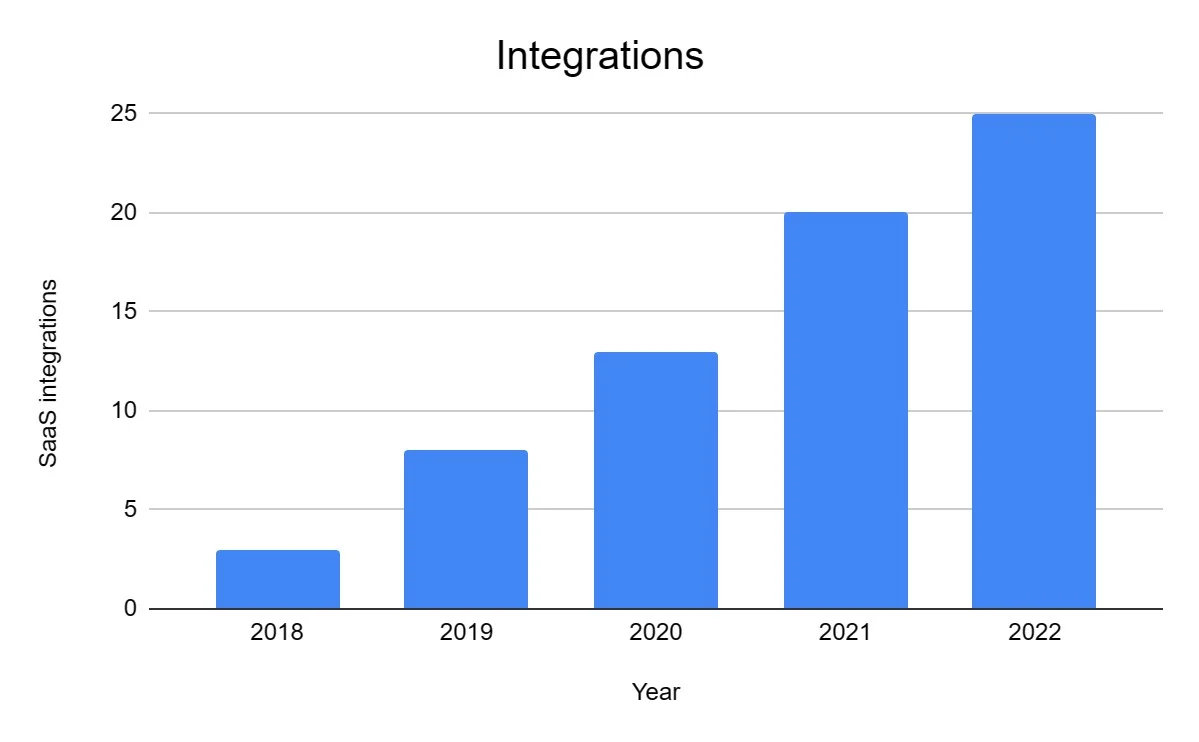Understanding and aligning culture for high performance DevSecOps by devsecops DevSecOps
Therefore, having fewer organizations from the start increases your flexibility in reacting to changing requirements in the future. In summary, the impact of fewer organizations can vary significantly, depending on the technical capabilities, cultural readiness for collaboration, and size of your enterprise. However, the generalization that devsecops organizational structure it leads to less siloing is always true to some extent. In addition to the technical considerations, don’t underestimate the impact that bridging multiple organizations can have on your developers’ feeling of belonging. Being a member of one large group with frequent interactions is distinct from being a member of several smaller groups.
- However, simply adding new tools or designating a team as DevOps is not enough to fully realize the benefits of DevOps.
- This may include adopting new technologies and tools, such as automation and orchestration platforms, as well as implementing new security protocols and processes.
- Overcoming the barriers presented by legacy security practices, coupled with an absolute lackadaisical attitude of the employees is not easy.
- But this also means monitoring becomes more crucial than ever from an operations standpoint.
- In our 2021 Global DevSecOps Survey, a plurality of ops pros told us this is exactly how their jobs are evolving — out of wrestling toolchains and into ownership of the team’s cloud computing efforts.
We analyze the unique components of your DevOps and security programs and tailor our approach to help you build innovative and secure development and deployment practices. DevOps brings together software development and operations to shorten development cycles, allow organizations to be agile, and maintain the pace of innovation while taking advantage of cloud-native technology and practices. Industry and government have fully embraced and are rapidly implementing these practices to develop and deploy software in operational environments, often without a full understanding and consideration of security. A move from DevOps to DevSecOps is far from strictly a technological affair. Such a transformation will significantly impact your developers, sysadmins, project management, and stakeholders. DevOps to DevSecOps transformation touches other business units when it enables them to deliver on projects to their customers at a higher velocity and more securely.
Develop high quality, secure code!
But once DevOps has become mission critical, the tools and processes being developed and used must themselves be maintained and treated as a project, making a pipeline for your pipeline. So having teams that collaborate with some or significant levels of cooperation https://www.globalcloudteam.com/ are the teams that will most likely succeed. SRE practices are commonly found in DevOps teams, regardless of if they formally adopt them. DORA’s research has found reliability unlocks the effect of software delivery performance on organizational outcomes.
Most organizations find it challenging to move from traditional management structures that have been proven for some of the emerging concepts now being introduced. From my vantage point, holocracy is challenging when innovation is required and the team is not committed to that innovation. DevSecOps is best employed when teams have the ability to look at what they are doing and determine how to proceed so long as they leverage measurement to guide their decisions. Remember, when it comes to the ultimate big-picture goal of DevSecOps, it’s always about minimizing the financial impact to your organization.
Embrace DevSecOps or Become Obsolete: Addressing the Challenge for Today’s Software Organizations
Because security is integrated into the development process, it is possible to deploy updates and new features quickly and efficiently without sacrificing security. This allows organizations to stay competitive in a rapidly-changing market, where the ability to adapt and innovate quickly is key. I have used both DevOps and DevSecOps terms interchangeably above because I think they are all the same. There are also other terms that came out after DevOps and they are basically just DevOps with an emphasis on certain areas. And there is also a term called NoOps which I will leave for you to explore; it’s interesting.
A DevOps to DevSecOps transformation works best with a structured framework acting as governance. When you approach such a transformation, putting structure around it allows you and your teams to stop, ask questions, and iterate on potential changes to your existing DevOps processes. By continuously delivering product increments and features, you will discover problems sooner and come up with solutions sooner. In the worst extreme, you might pivot your strategy or even abandon the idea early. You may decide your organization just doesn’t have the internal expertise or resources to create your own DevOps initiative, so you should hire an outside firm or consultancy to get started. This DevOps-as-a-service (DaaS) model is especially helpful for small companies with limited in-house IT skills.
DevOps World: Time to Bring the Community Together Again
This is the new age of security, using a risk-based approach instead of a reactive one—that is, identifying what needs protection, why it must be protected and how you will do so. It’s also understanding that security should not be just an external threat perspective, but also having visibility into what’s happening internally. Creating a single source of truth will ensure the greatest accuracy of information for everyone.

Depending on your organization’s maturity and situation, it may also mean improving the security of your access controls and endpoints against future attacks. A two-tier model, with a business systems team responsible for the end-to-end product cycle and platform teams that manage the underlying hardware, software, and other infrastructure. DevOps and SRE groups are separate, with DevOps part of the dev team and Site Reliability Engineers part of ops. Once DevOps starts gaining traction within the organization, the tools and processes to support it will become mission-critical software. At this point in the DevOps maturity, the tools and processes need to be built, maintained, and operated like a product. Making changes in the pipeline to improve the processes or even just to update to tools to stay current will no longer be something that can be done whenever one team feels like it.
The DevSecOps Beginner’s Guide: 7 Concepts To Ace for DevSecOps Success
Overall, DevOps and/or DevSecOps is a powerful approach to software development that allows organizations to build and deploy secure software quickly and efficiently. By integrating security into the development process, organizations can stay competitive and protect themselves against security threats. It’s not just about the tools, it’s also about faster feedback loops and better customer experience. And lastly, executives will see the value of DevSecOps initiatives when they have visibility of the software delivery performance. Organizations like this still see ops as something that supports the initiatives for software development, not something with value in itself. Organizations like this suffer from basic operational mistakes and could be much more successful if they understand the value ops brings to the table.

This approach allows for the identification and resolution of security issues early on before they become a major problem in production. You need to get there somehow, and that probably means a transitional organizational structure. Typically, this will happen with some sort of pilot team that acts as the seed for the organization’s DevOps culture. Platform Engineering is often found alongside DevOps and has a strong link with software delivery performance. It intersects with team topologies, as platform teams have many ‘as-a-service’ interactions with the other team types. Atlassian offers an Open DevOps solution that provides end-to-end DevOps processes with Atlassian and other third-party tools.
If you follow data, revenue and growth will follow you
GitHub offers a variety of integration options through GitHub Apps, Webhooks, and APIs, which can be leveraged to enforce good development practices, such as branch protection rule sets, workflows, and more. It is important to note that most of these integrations are scoped to organizations, so they cannot be installed on enterprise level. There are several ways teams help establish culture within your enterprise, for example, through access controls, communication, such as discussions, work and knowledge sharing in code reviews, and roles. A team (perhaps a virtual team) within Dev then acts as a source of expertise about operational features, metrics, monitoring, server provisioning, etc., and probably does most of the communication with the IaaS team. This team is still a Dev team, however, following standard practices like TDD, CI, iterative development, coaching, etc.

Treat the tools and processes as a project, probably maintained by a team that can focus on the pipeline as a product. Separate the development and maintenance work being performed on the pipeline from the production pipelines being used by the other teams. By integrating security into a continuous integration, continuous delivery, and continuous deployment pipeline, DevSecOps is an active, integrated part of the development process. Security is built into the product by integrating active security audits and security testing into agile development and DevOps workflows. Practices like continuous integration and continuous delivery ensure changes are functional and safe, which improves the quality of a software product.
Create one team, maybe “no ops”?
In fact, the top management’s involvement in security measures often ensures enterprise-wide collaboration. There’s no better way to confirm that the tools and processes you’re putting in place for your DevOps teams to move to DevOps are working than a real-life pilot project. Pick a small internal project with an owner who’s keen to move to DevSecOps. Put your best people on the project and use it as a learning opportunity for your developers and sysadmins.
دیدگاه خود را ثبت کنید
تمایل دارید در گفتگوها شرکت کنید؟در گفتگو ها شرکت کنید.